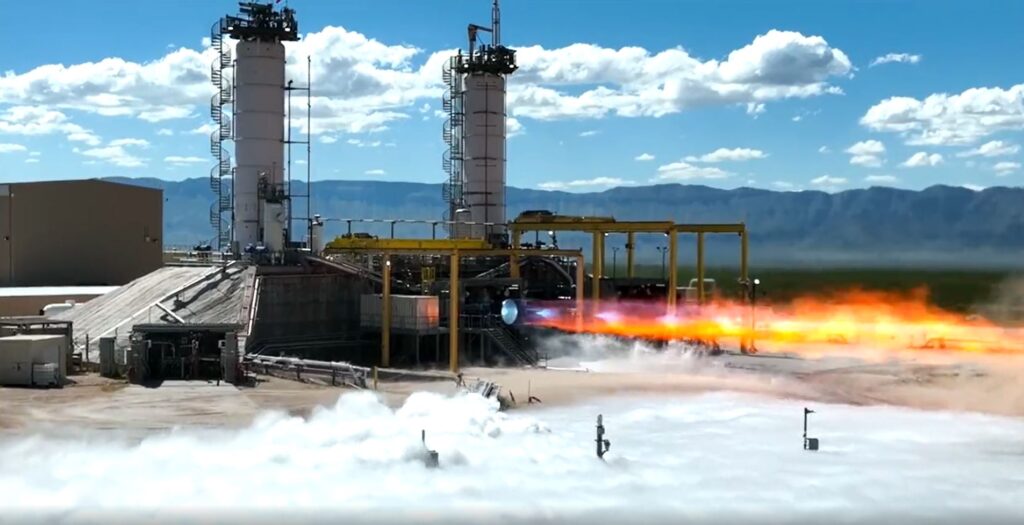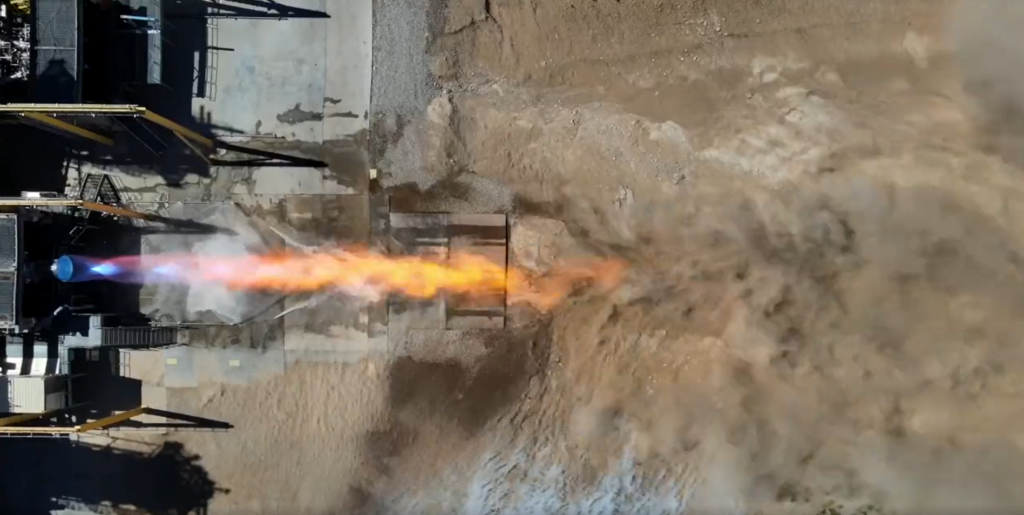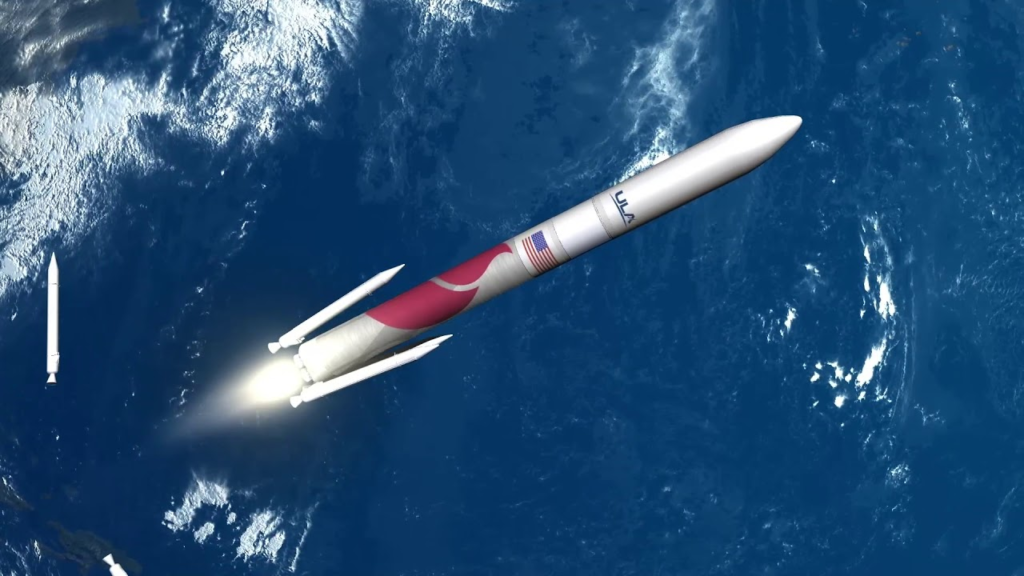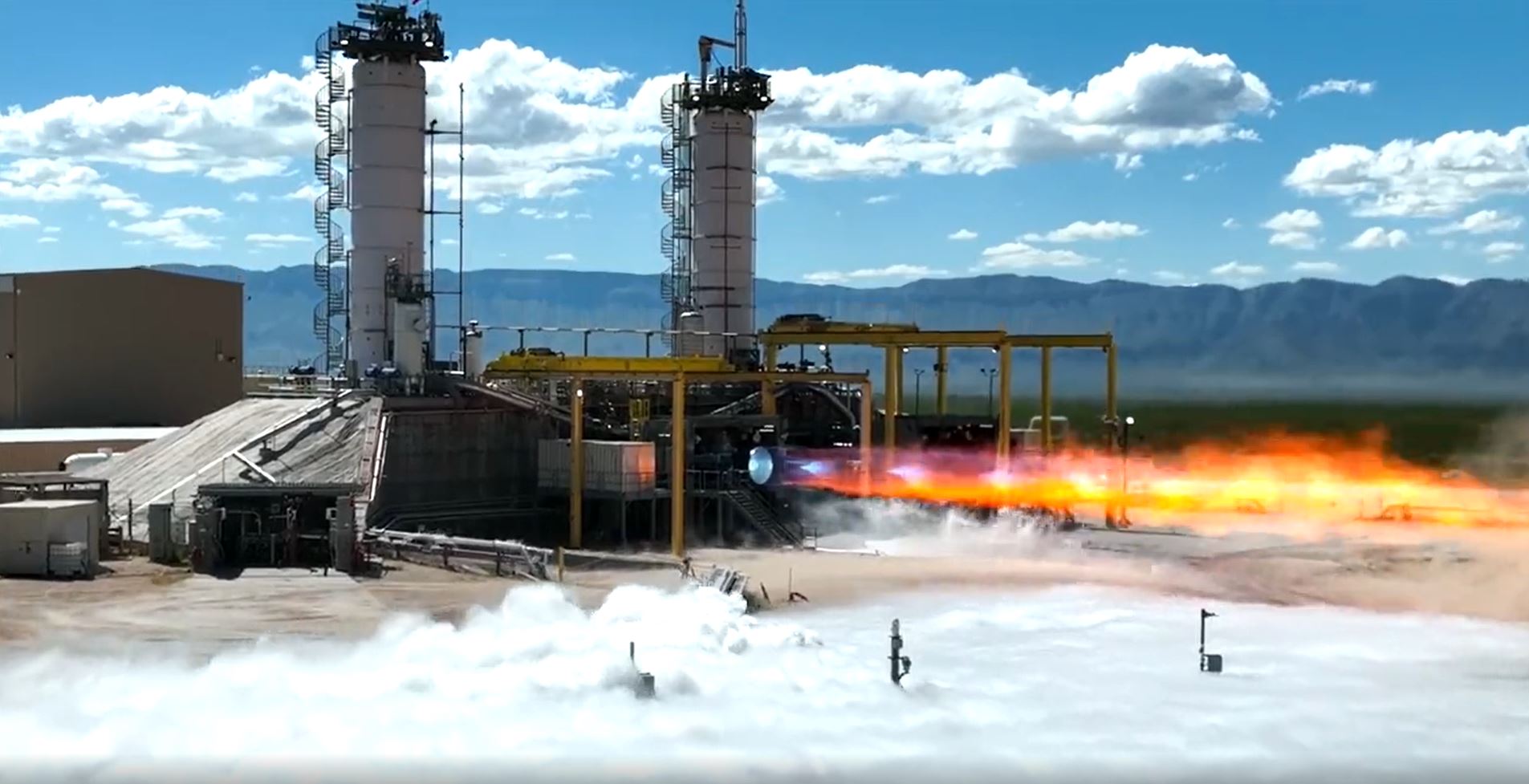
An Update On The BE-4 Engine & Its Progress
Rocket engines are immensely important pieces of equipment that can single handedly determine the efficiency and capability of different launch vehicles. This being said, they are also extremely complex and a lot of different factors are considered when developing a next generation engine. For years now Blue Origin has been working to develop, test, and produce the BE-4 engine.
While updates on the engine’s progress are often rare, just yesterday Tory Bruno provided some footage and information on BE-4. Specifically, he released a full-duration acceptance Test Firing of the FE2 First flight engine. This is significant as next generation rockets such as Vulcan rely on the BE-4 for it’s future flight operations and general missions.
Just around one month ago in late August, Tory Bruno hinted at this test with an image of the flight engine on the test stand. Now with the footage, we can get a better idea of its progress, performance, and its schedule with so many big projects just around the corner. Here I will go more in-depth into the new test footage, how this impacts the future of Vulcan and New Glenn, what to expect in the coming months, and more.
New Test Footage

On August 26th, Tory Bruno, the CEO of United Launch Alliance tweeted saying, “Ok, then. I spy a BE4 Flight Engine #2 on the test stand.” This included an image of the flight engine on Blue Origin’s engine test facility in West Texas. At the time, only this image was released and no footage. However, just yesterday Tory Bruno tweeted mentioning, “Found it! Ok, since you asked so nicely… here is a full duration @BlueOrigin#BE4 firing. Enjoy.” In addition, Blue Origin clarified with a tweet soon after pointing out, “Check out the powerful #BE4 engine coming to life at our XEEx testing facility in West Texas. Seen here is a hot fire of a @ulalaunch flight engine for #VulcanRocket.” Being that the test was full duration, the footage is 4 minutes and 45 seconds long. The video shows off different angles of the hot fire including its powerful effect on the nearby surroundings.
To get a better idea of the progress being made on these engines and the speed at which Blue Origin is producing them, we can look back in time a few months. Specifically, on July 30th, Tory Bruno tweeted saying, “Wow. You guys really do like seeing rocket engines. OK, Flight Engine #1 (fully assembled) on the left. #2 (almost done) on the right.” This image showed off both engines but most importantly the unfinished flight engine 2 on the right. This same engine is the one we just watched go through a full duration hot fire. Taking a closer look at this full duration test just released, Tory Bruno gave some additional information on the test and specific engine. First, someone asked when this engine would be ready and Tory responded “momentarily”. Another person asked if the thrust numbers of the BE-4 were matching Vulcan requirements. Tory Bruno responded by saying the thrust numbers were better than expected. This obviously is a good sign as Vulcan gets closer and closer to being flight ready.
While the BE-4 engine has most definitely had some delays over time, it looks as if they are making progress and delivering some high quality engines to customers such as ULA. BE-4 is a liquid natural gas or LNG fueled rocket engine using an oxygen-rich staged combustion cycle. BE-4 is capable of producing 2,400 kN (550,000 lbf) thrust with deep throttle capability. Blue Origin highlights that they chose LNG because they are confident it is highly efficient, low cost, and widely available. They also point out that unlike kerosene, LNG can be used to self-pressurize its tank. Known as autogenous repressurization, this eliminates the need for costly and complex systems that draw on Earth’s scarce helium reserves. LNG also possesses clean combustion characteristics even at low throttle, simplifying engine reuse compared to kerosene fuels. With this engine expected to be the backbone of future reusable launch vehicles such as New Glenn, this is a very important feature. Specifically, BE-4 was designed from the beginning to be a medium-performing version of a high-performance architecture. Blue Origin points out that it’s a conscious design choice made to lower development risk while meeting performance, schedule, and reusability requirements.
Right now, BE-4 is currently undergoing full-scale engine development testing at Blue Origin’s facilities in Van Horn, Texas. Full rate production will occur in the company’s engine manufacturing facility in Huntsville, Alabama. Practically all the updates over the last few months on this engine have either been hot fires or the engine in the production facility. These tests include full duration, a change in engine throttle, gimballing, and more. Yesterday’s update on the engine is another good sign as the rockets that rely on it continue to make progress.
Vulcan & New Glenn

Now that we know more about BE-4 and some of the progress that it has made, we can take a closer look at the two launch vehicles that depend on it. This includes ULA’s Vulcan launch vehicle and Blue Origin’s New Glenn. However, we can start with Vulcan as this rocket is quite a bit further ahead than New Glenn and has priority on the engines. In the last few months Tory Bruno has somewhat consistently given updates on Vulcan and the progress it’s making. Vulcan Centaur is a two stage, heavy-lift launch vehicle that has been under development by the United Launch Alliance since 2014. The core stage utilizes two BE-4 engines for the majority of thrust. In addition, Vulcan integrates up to six Northrop Grumman Graphite Epoxy Motor (GEM) 63XL Solid Rocket Boosters (SRBs). They are constructed out of a graphite-epoxy composite with the throttle profile designed into the propellant grain.
Vulcan will rely on two RL10C engines to power its second stage. Logging an impressive record of nearly 400 successful flights and nearly 700 firings in space, RL10 engines, manufactured by Aerojet Rocketdyne, harness the power of high-energy liquid hydrogen. The RL10 boasts a precision control system and restart capability to accurately place payloads into orbit. Altogether this creates the Vulcan rocket, meant to become ULA’s next workhorse within the space industry. Through its development, the BE-4 engine progress became a concern as the rocket itself was getting close to ready but needed its engines. This being said, recent updates point out that ULA is indeed receiving engines and working through the testing phase. As of right now, the company still has the first flight of Vulcan scheduled for no earlier than December of this year. In reality, it will likely take a few more months before they are ready. Either way, the first launch is not far away at all.
This leads us to the next rocket that relies on BE-4 which is Blue Origin’s New Glenn. New Glenn is a single configuration heavy-lift launch vehicle with the goal of carrying people and payloads routinely to Earth orbit and beyond. The rocket features a reusable first stage built for 25 missions that will utilize 7 BE-4 engines. With all these engines the first stage is expected to generate 17,100 kN (3.85 million lbf) thrust at sea level. Looking at the mission profile, it starts when New Glenn lifts off from Launch Complex 36 at Cape Canaveral. Following stage separation, the first stage flies back to Earth and lands nearly 1,000 km downrange on a platform. The second stage engines ignite and the 7-meter fairing separates. The mission is complete when the payload is delivered safely to orbit. New Glenn uses the same all liquid propellant system configuration to perform a wide range of highly energetic missions without the need for solid rocket motors or multiple cores that can impact system reliability. New Glenn is a single core design and has only three (3) unique separation events for a dedicated mission (second stage, PLF, and payload). The company highlights that by using a single configuration for all missions and an operationally reusable first stage, New Glenn will rapidly accumulate flight heritage and operational economies of scale.
In terms of progress, the company still has quite a lot of work on the rocket. Over the past few months, we have received very few updates from Blue Origin on the rocket. Based on its current development, it will likely be years before we see the first New Glenn test flight. Not to mention the fact that core pieces of equipment such as the BE-4 engine go to ULA first. The company has priority and will get them for Vulcan first meaning Blue Origin will need to produce enough for both companies before they are available for New Glenn. Although, Tory Bruno’s consistent engine updates are a good sign not only for Vulcan but also New Glenn. We will have to keep an eye on both companies and specifically BE-4 as time goes on.
Conclusion
Blue Origin has been working to develop, produce, and test the BE-4 engine for many years now. Just yesterday Tory Burno shared a full duration hot fire of the engine as they prepare for Vulcan’s first launch suing this equipment on the first stage. Not only does Vulcan rely on this rocket but also on New Glenn. We will have to wait and see how it progresses and the impact it has on the space industry.

My bet is the Vulcan will not launch earlier than the end of 2023 and the BE4 will give them problems to boot.